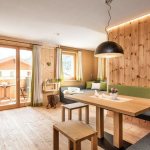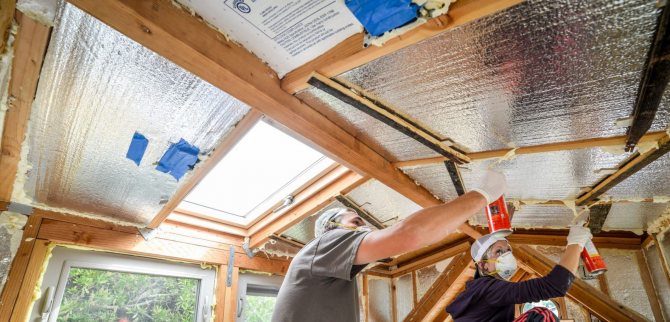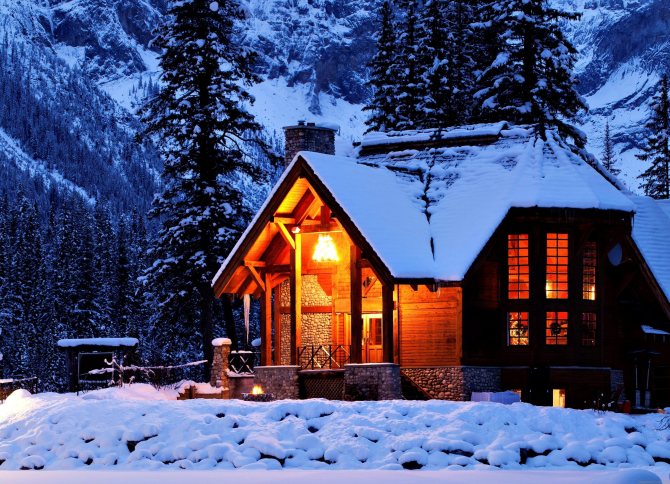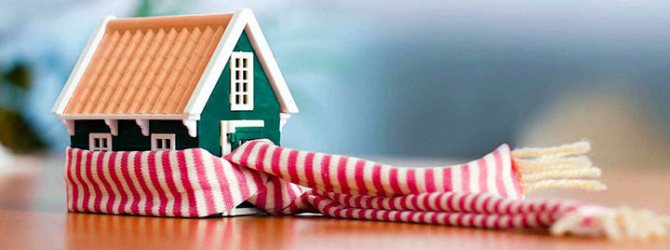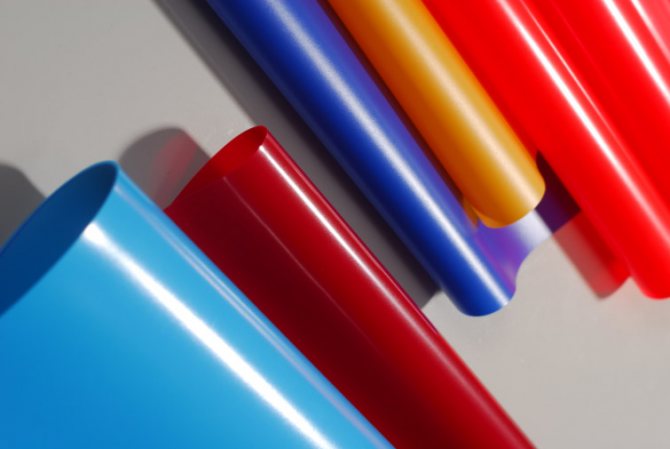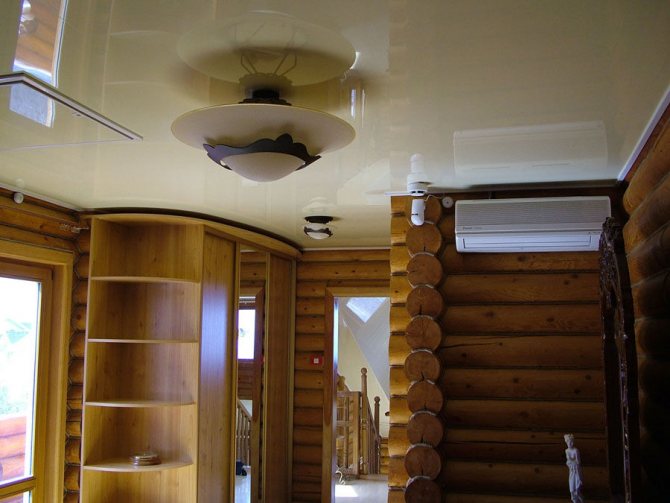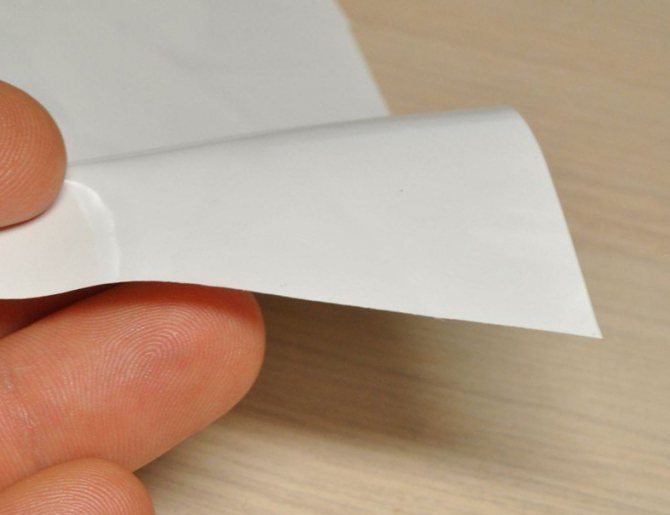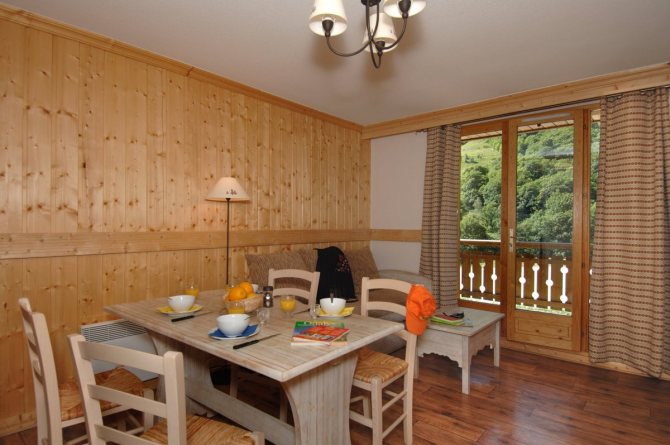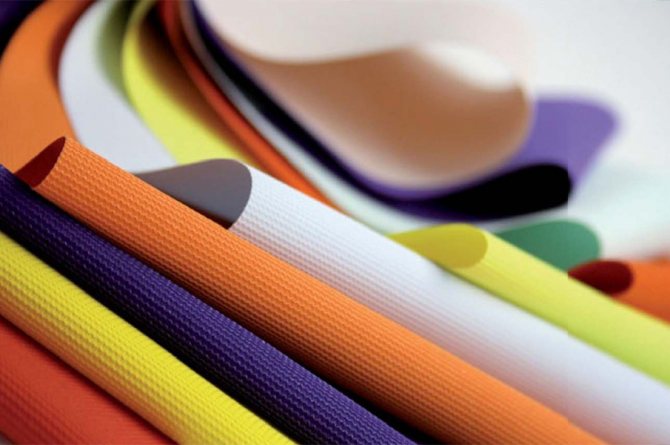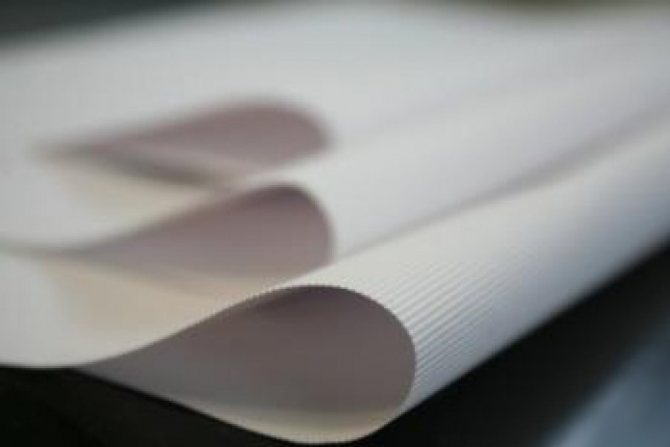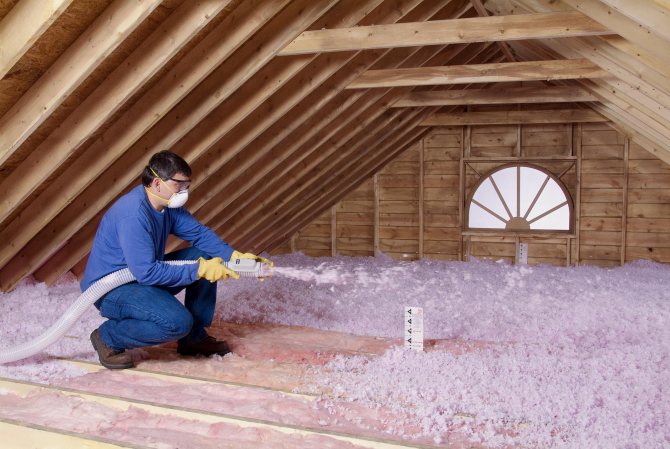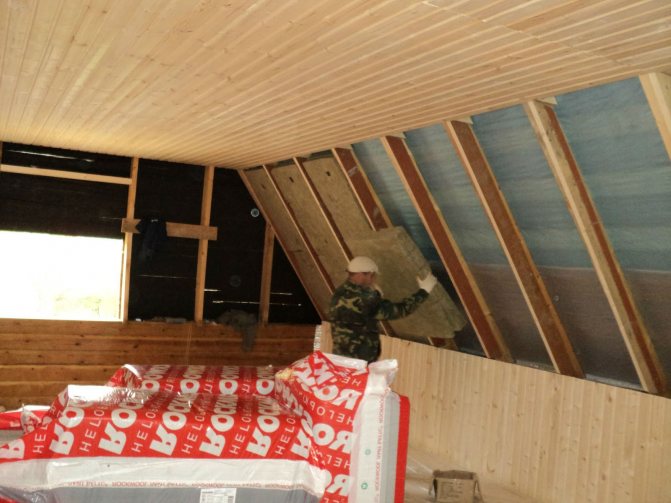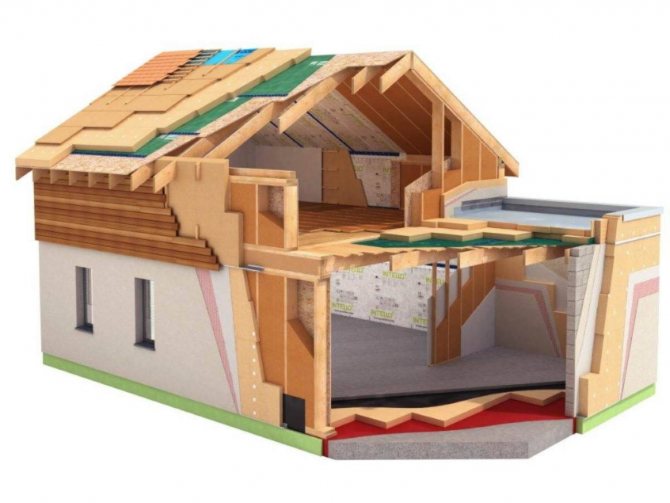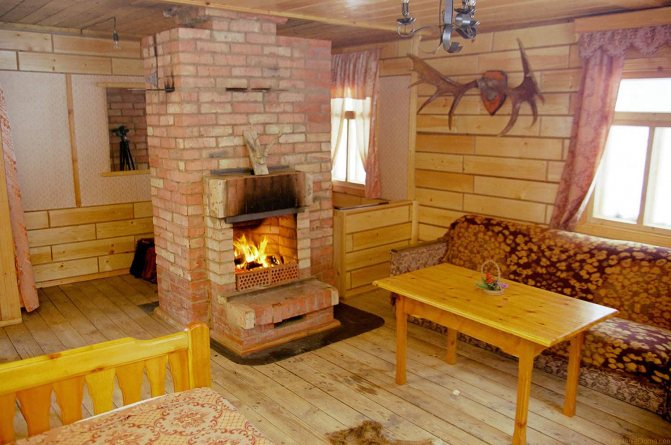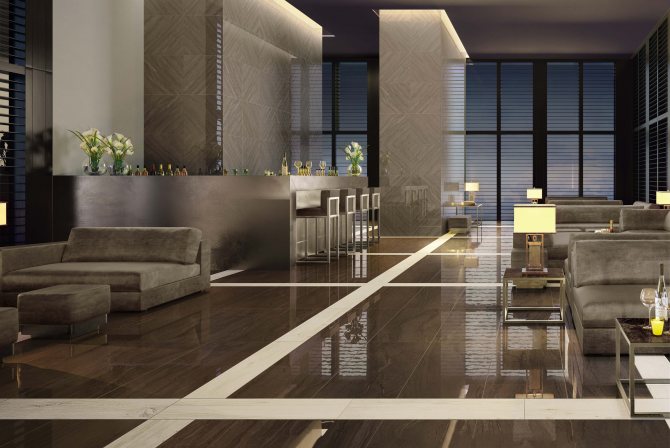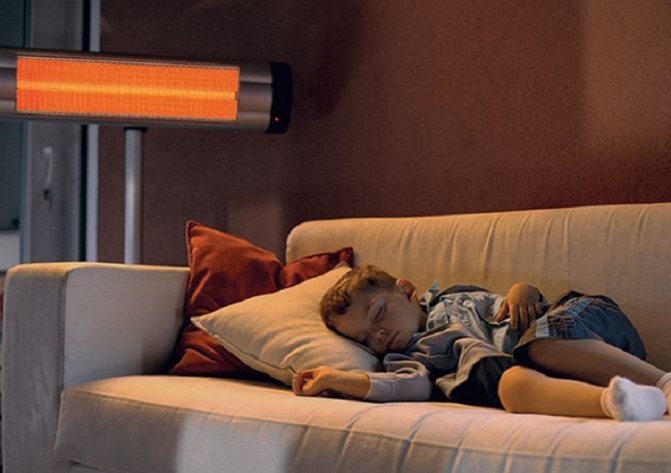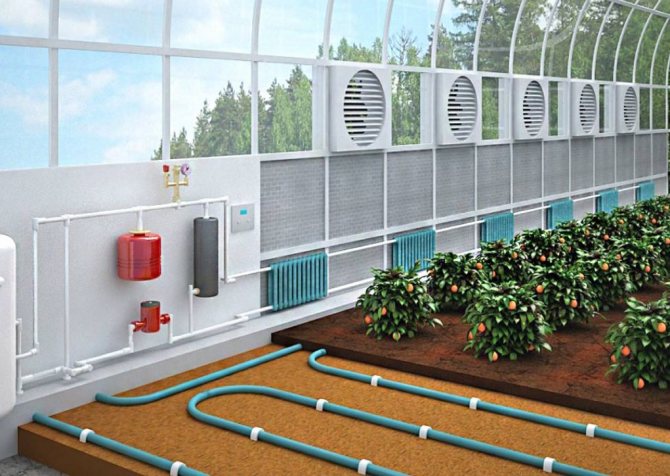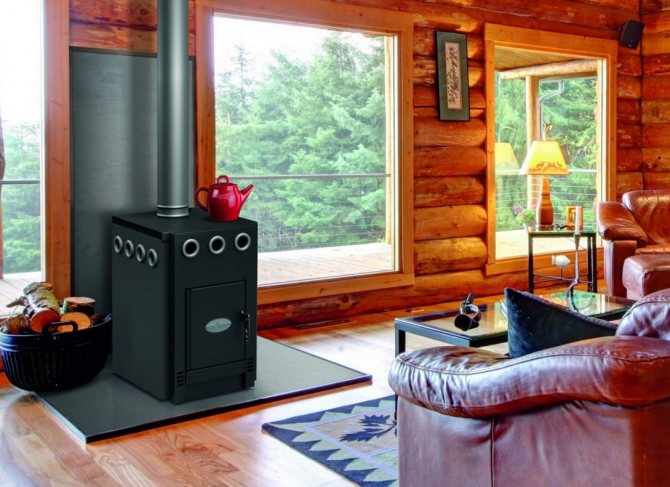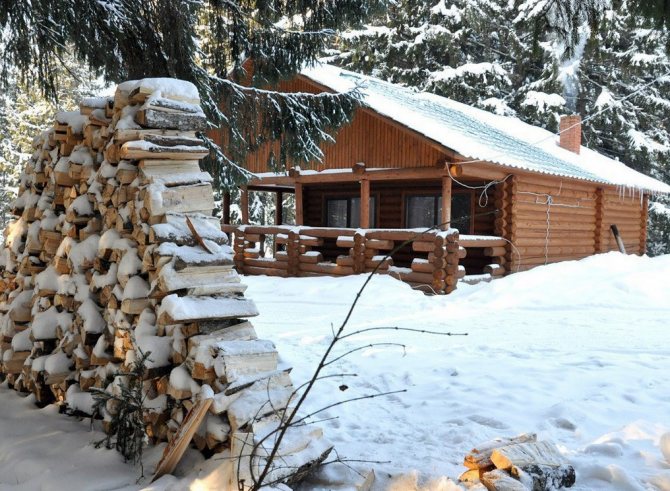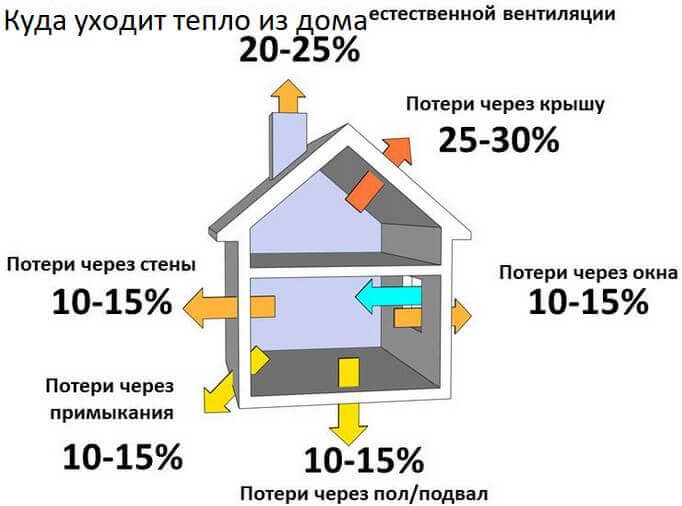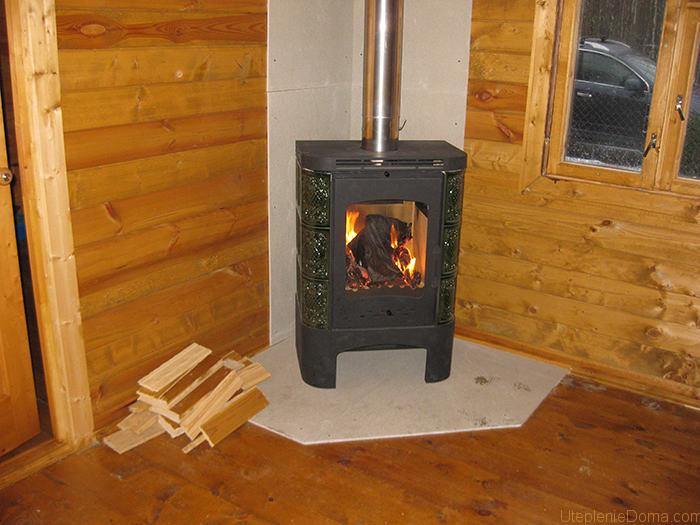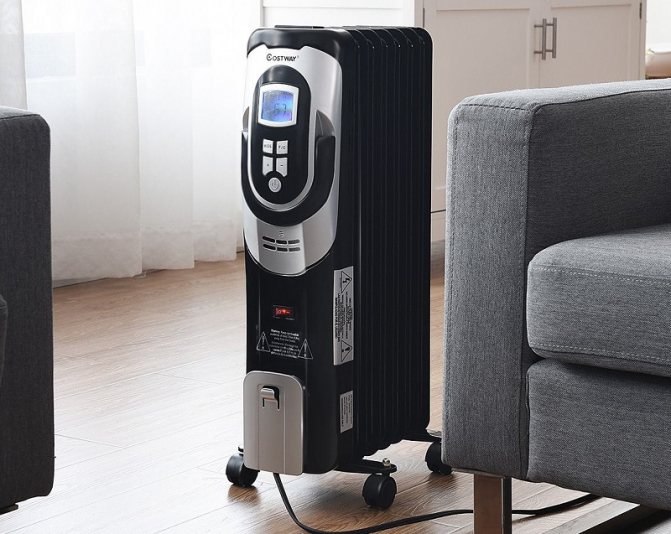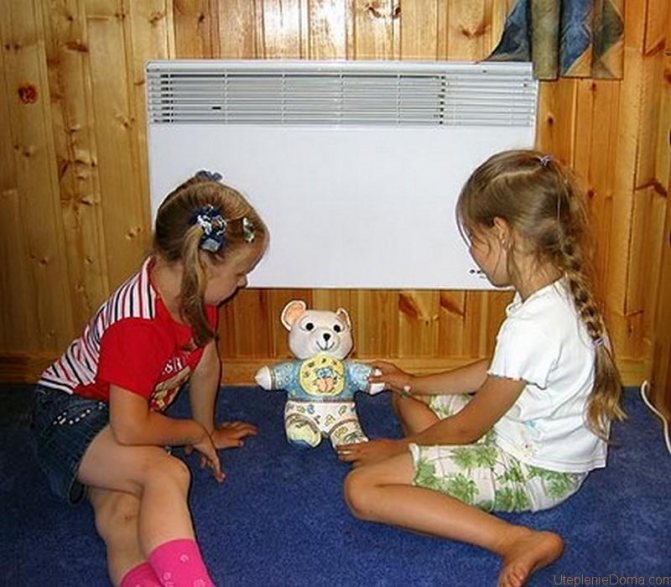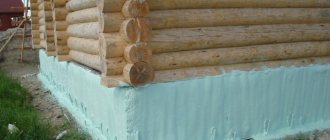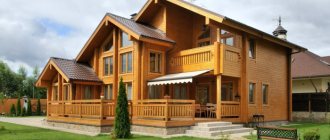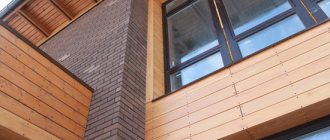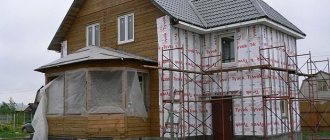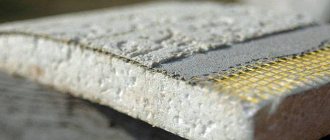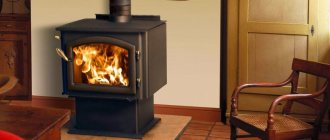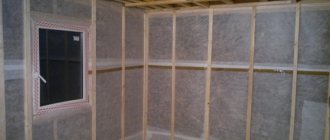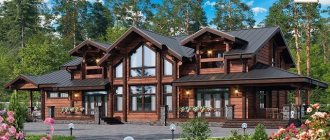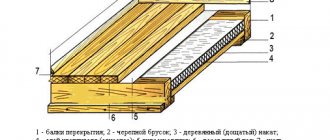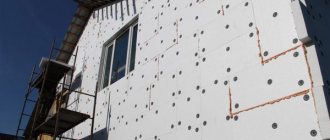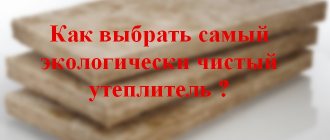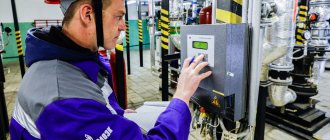The popularity of stretch ceilings is growing every year. This is due to the possibility of quick installation without dust and a long service life. But this type of decoration is used, as a rule, in city houses and apartments, where a constant temperature regime is maintained and people are there every day. Therefore, it is not clear how such a coating will behave in buildings of seasonal operation, where heating is either not provided, or is switched on periodically. Let's try to understand this issue. To find out whether it is possible to make a stretch ceiling in an unheated suburban area, consider the properties of this coating.
Types of materials used
Distinguish between vinyl and fabric. It is these materials that the manufacturers of stretch ceilings offer today and the differences between them are very significant.
Vinyl canvas Is a thin PVC film with a thickness of 0.15-0.37 mm, produced in rolls with a width of 1.3 to 5 meters. The main qualities of vinyl ceilings:
- harmless to humans and the environment;
- fire safety - PVC film does not support combustion, the material melts, but does not ignite;
- biological resistance - mold does not form on the surface of the canvas;
- elasticity - when heated, vinyl can stretch up to 220%;
- strength - withstands loads up to 17 MPa;
- water resistance - does not allow moisture to pass through.
Manufacturers offer glossy, matte and satin fabrics with a huge number of shades. Vinyl film is distinguished by bright colors, allows you to combine materials and apply photo prints, which provides endless possibilities for use in different interior styles.
Due to its strength and water resistance, PVC ceiling can hold up to 100 liters of liquid for a long time in the event of a flooding or roof leak. In the future, the water is easily drained and the web is re-tensioned. For rooms with high humidity, PVC is the most suitable option.
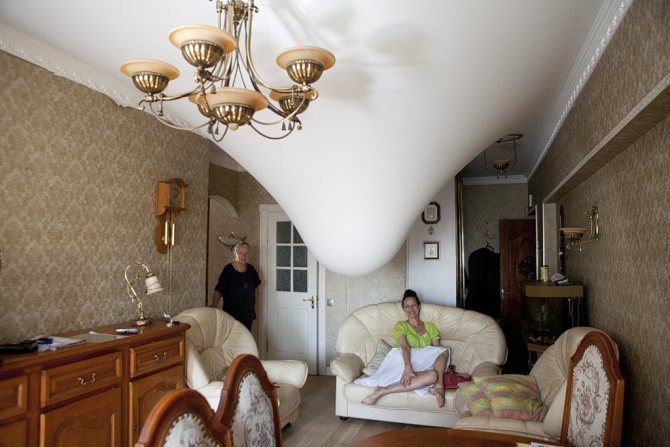
Among the shortcomings, it is worth noting air tightness. In a room with insufficient ventilation, the "greenhouse effect" appears - humidity increases and it becomes stuffy. It is also easy to damage the stretched canvas with a sharp object. Even a "shot" with a cork of champagne can lead to dire consequences. Therefore, the film requires a particularly careful attitude.
Fabric ceiling - is a synthetic polyester fabric impregnated with polyurethane, 0.12 mm thick, sold in rolls from 3.1 to 5.1 m wide. Main material properties:
- environmental friendliness - does not contain and does not emit harmful chemical compounds, thanks to special perforation, the polyester ceiling is able to "breathe", which is important for creating a comfortable indoor climate;
- thermal stability - the material can withstand a wide range of temperatures (from –40 ° C to +80 ° C) without losing its properties;
- relative elasticity - it can stretch up to 120%, but when heated, unlike vinyl, it shrinks;
- fire safety - thanks to special impregnations, the textile fabric does not ignite and does not support combustion;
- high strength - accidental damage to polyester is unlikely;
- quick installation - no heat gun is required;
- easy care - the antiseptic coating of the canvas eliminates the accumulation of dust on the surface;
- water permeability - polyester is "not friendly" with water and is not suitable for wet rooms;
- the possibility of multiple dyeing - textiles can be painted with acrylic paints, but no more than 5 times to avoid sagging.
Gas heating
Depending on the principle of operation and the source of heat, heaters are divided into oil, infrared, gas, etc.
What is an oil heater? This is the reservoir that contains the heating element. Oil is also poured there. Oil as a heat carrier was not chosen by chance: it heats up for a long time, but then, after maximum heating, it is able to maintain a high temperature for a long time.
This device has other advantages:
- relatively low price;
- mobility (unlike a battery, the heater can be moved anywhere in the room or country house);
- during its operation, there are no extraneous odors and noise;
- during heating, it does not dry the air in the room.
Of the minuses, it is worth mentioning the following:
- the oil heats up very slowly, so you have to wait a long time for the air in the room to warm up. Oil heaters equipped with a fan are devoid of this drawback, although they are more expensive;
- due to the massive body and the oil poured into the tank, these devices are quite heavy. If you have a two-story summer cottage, then when you move the device from one floor to another, this can turn into a big problem;
- there is a risk of burns due to the high temperature of the housing. This is especially important in families with children;
- considerable cost of energy consumption during prolonged heating of the heater.
An infrared heater has a completely different operating principle. The temperature rise there is due to the action of infrared rays (hence the name). They act like the sun's rays: they freely pass through the air without heating it. When on the way there is some kind of "obstacle" (man, animal, furniture, etc.)
Infrared heaters can be installed on any surface: floor, wall or ceiling. They have a rollover protection that immediately turns off the device after a fall. They also have other advantages:
- these devices do not waste time on prolonged heating, like oil devices, but begin to give off heat immediately after switching on;
- they work silently, do not create odor and do not burn oxygen in the room;
- many models have sensors that prevent the device from overheating and maintain the temperature at the level desired by the owner.
Infrared heaters are not devoid of disadvantages:
- rather high price compared to oil heaters;
- limited distance between the device and the object / person, beyond which the action of the device is no longer felt;
- with prolonged exposure to infrared rays, deterioration of health is possible: headache, dry skin and eyes.
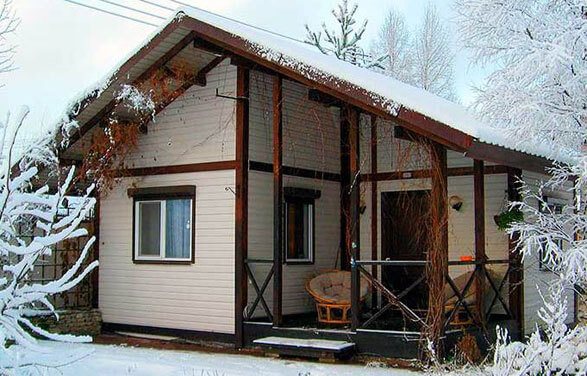

A slightly different type of heating device, which is often used when heating country houses in the cold season, are convectors. The principle of their work is based on the property of cold air to go down, while displacing warm air from there. The latter rises up, cools down there and then goes down again. This is the natural circulation of air - convection. She gave the name to the device - a convector.
The electric convector consists of a body with air intake openings in the upper and lower parts. A heating element is located inside the housing. Cold air enters the housing from below and flows around the heating element. At this time, its temperature rises, and a hot air stream comes out of the case through the upper openings, which immediately rises up to the ceiling. There it gives off its warmth to the surrounding space, cools down and goes down again. Thus, the room is heated.
Pluses of convectors:
- very quickly warm up the air in the room;
- unlike heaters, the casing of convectors almost does not heat up, so it is impossible to get burned on it;
- fairly low noise level;
- a temperature sensor helps control the level of heat in the room and turns off the device when the desired temperature is reached. Thanks to this, energy is saved.
There is nothing perfect in the world, therefore, convectors have disadvantages:
- during the operation of the convector, the level of humidity decreases, the air becomes very dry;
- high power consumption;
- without a working convector, the air cools very quickly, so the device must be turned on all the time.
In addition to firewood and electricity, there is another source of thermal energy that many summer residents use with success - gas. If gas is not supplied to your dacha, you can use liquefied gas (it is supplied in cylinders): currently, many heating devices can operate on any of these fuels. Of the equipment that runs on gas, in a country house they use:
- infrared gas heater,
- gas convectors,
- catalytic gas heater.
The principle of operation of the first two devices does not differ from their counterparts operating on electricity. But the action of a catalytic heater is based on the interaction of a burning gas with a special catalyst plate. During combustion, the gas, thanks to the catalyst, is oxidized. The oxidation reaction is accompanied by the release of a large amount of heat, which heats the room. At the same time, the gas consumption is very low, because the oxidation reaction depends simply on combustion, and not on its power.
Pros of gas equipment:
- quite low gas price;
- ease of installation, mobility;
- fast heating of the room;
- reliability.
We suggest that you familiarize yourself with How to prepare horseradish for the winter at home: 11 simple recipes
Not without its drawbacks:
- when using gas cylinders, there is always a risk of gas leakage;
- at low temperatures, there may be a problem with turning on the gas heater;
- infrared gas heaters are quite expensive; in the event of a breakdown, their repair will also cost you a pretty penny;
- when gas is burned in convectors, combustion products are formed, for the withdrawal of which a chimney is required;
- catalytic heaters have practically no combustion products, but they have another drawback - a limited service life. When using low-quality gas, it is greatly reduced.
Gas heating for summer cottages is a complex engineering system. Before installing expensive equipment, you need to provide good thermal insulation. An ideal system should work silently, economically, warmly, and invisibly. Gas equipment requires constant maintenance and preparation for the winter season. Maintenance must be done by certified technicians.
A water system is best suited for gas heating. If the system will not be filled in winter, the pipes must be filled with antifreeze. Such a nuance will save the system from defrosting. The installation of gas equipment includes the installation of radiators that will give off their heat to the room.
Frost resistance of film and fabric canvases
The most important difference between a fabric ceiling and PVC is its ability to withstand prolonged exposure to low temperatures.
Most vinyl materials on the market are limited to 0 ° C. For fabrics, the lower limit of frost resistance is –40 ° C. The difference is significant.
Recently, manufacturers have learned to make a film sheet with the addition of latex, which is not afraid of a drop in air temperature to –30 ° C. For middle latitudes, this margin of safety is quite enough; in a summer residence, such cold, as a rule, does not happen. However, the cost of this material is several times more expensive.
How stretch ceilings behave in winter without heating
If you plan to install a stretch ceiling in an unheated room, the choice of material must be approached most responsibly. It all depends on the climatic conditions, or rather, on the temperature regime in the room in winter. Summer country house or summer cottage in cold weather, as a rule, is not heated. In any case, most owners prefer to spend the winter in warm apartments.
The best canvas for the ceiling in a cold house is synthetic fabric, since polyester does not harden in subzero temperatures, while PVC film becomes brittle and brittle.
Vinyl stretch ceiling in the cold will crack, as the tension of the membrane increases to the limit. The process of destruction is accelerated by the sharp changes in temperature that are characteristic of our regions.
The fabric has one more advantage - it is not afraid of hot weather. And the tension of the elastic film weakens when heated, and even sagging may appear. Of course, when the ceiling cools down, it regains its original appearance, but at the same time additional operational loads arise that affect the service life of the coating. Of course, it makes no sense to constantly turn on the air conditioner in an empty country house, as well as to heat it in winter. In addition, a suburban building in the cold can become a refuge for mice, and PVC film - an object of their close attention.
Capital structures
The stove sometimes becomes the only salvation if power outages occur in the country in winter or there is no connection to the gas main.
Long burning ovens
What is the "trick" of these ovens, it is clear from the name, and they are also good in that:
- one bookmark of firewood is enough for 4–5 hours;
- they can be connected to the water circuit (this helps to increase the efficiency of the stove heating, and the heat is evenly distributed throughout the room);
- there is a large selection of models on sale.
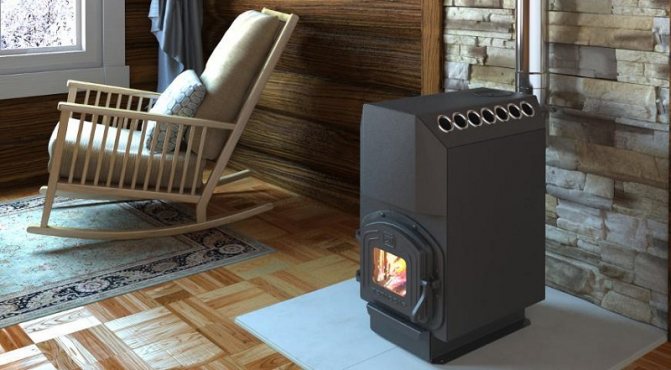

Long burning furnaces are placed only on fireproof coatings.
I am using Butakov at the moment. If you heat 100 m3 of firewood, just load it (if overboard -10). Eight hours of decay was never achieved - a maximum of 3 hours. 85% efficiency is a blatant lie. Here 40% (not less) of the heat flies into the pipe. It is difficult to select the desired mode. It cools down as quickly as it heats up, which could not be otherwise. This is not an alternative to a stone stove, which heats with its mass with two or three protopes per day. This is nothing more than a very good potbelly stove!
Fiora https://forum.awd.ru/viewtopic.php?f=922&t=61421
I'm sure negative reviews are written by those who do not know how to heat (I speak as an experienced user).
The stove was installed in a dacha in a house of 60 sq. m. We are very satisfied with the work of the stove, they used it until late autumn, and frosts were already in October. The house warms up quickly, in 30 minutes. In the evening, they laid firewood, closed the valves for a long burning, came the next day - it was warm in the house, and the coals were still smoldering in the stove, which means that the stove gives heat all night long. Valerii https://avtonomnoeteplo.ru/pechi-kaminy/30-dymohod-dlya-buleryana-ot-pokupki-do-ustanovki.html
Pros and cons of stretch ceilings in a cold room
From the above, the conclusion suggests itself that at subzero temperatures it is better to use synthetic fabric. But not everything is so simple.
- Firstly, there is an alternative in the form of expensive special films that feel great in houses without heating. They do not deteriorate from frost and temperature extremes, retaining their properties for many years. True, not everyone can afford such a pleasure. In addition, the choice of colors and textures is much more modest compared to ordinary film, and the maximum width of such material does not yet exceed 3 m.
- Secondly, with all the advantages, fabric ceilings are susceptible to the formation of fungus. And if the roof leaks, they will not save you from flooding. Another disadvantage: in high dampness in a cold room, synthetic fabrics are saturated with moisture. All this leads to irreparable damage to the material, which will have to be replaced. In addition, if it is necessary to dismantle the ceiling, for example, to gain access to communications, it is very problematic to install the canvas back. The fact is that after stretching, the excess fabric is cut off and during re-installation there will be practically nothing to grab onto.There are exceptions, though.
- Thirdly, some unheated rooms are not cooled to subzero temperatures even in unusually harsh winters. Balconies and loggias that are soundly insulated outside can be passively heated due to adjacent warm rooms. Therefore, PVC film is often used as a ceiling covering.
Thus, in order to make the right choice, you need to carefully study the operating conditions of a particular room, weigh the pros and cons, only after that you can determine the most suitable material.
Express heating
For this, heaters are suitable, starting to warm "right off the bat". To warm up the room faster, the room is ventilated for about 5 minutes before turning on the appliance.
Fan heater
The device instantly switches from cold to hot air, but it is usually used for short visits or only as an "aperitif" because it "shakes" a lot, and turning on, for example, an electric kettle, so as not to knock out the plugs, most likely will not work. Alas, the air flow is directed, a step to the left, a step to the right - and you leave your comfort zone.
Appliances that work like a hair dryer dry the air a lot, but you can turn on this drawback in early spring to your advantage: turn on the fan heater while you are working in the garden so that it dries out the room with furniture.
In the harsh winter of 2012 at work every day for several hours with short breaks, we "insulated" with wind. I did not immediately understand the nature of daily severe headaches, dry skin of the face, dull hair. I was constantly thirsty, my nasopharynx was dry. The result is a bad mood and poor performance. And after turning off, the room quickly became cold!
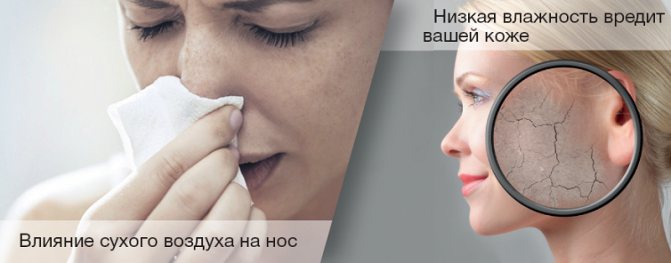

Dry air badly affects the appearance and physical condition of a person
Heat gun
A much more powerful analogue of a fan heater - a powerful air jet conscientiously dries damp corners, but also your skin. How long to turn on the gun, your physical condition and the readings of the electric meter will tell you.
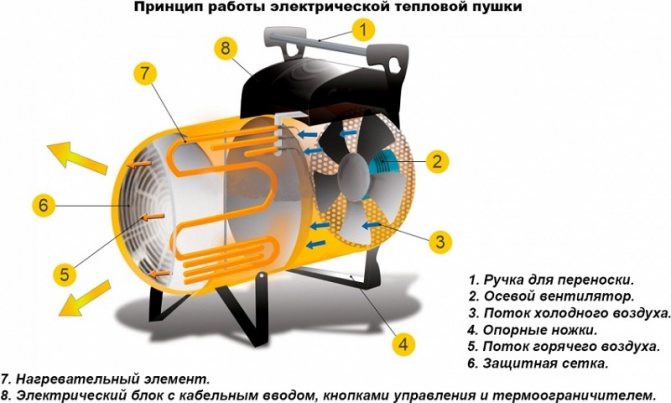

It is not scary to operate a heat gun in the house, knowing the principle of its operation.
Electricity in bed
Electric mattresses and sheets, arranged according to the warm floor principle, provide a dry, warm bed in half an hour. They also use cloth heating pads during the day - they cover their legs while sitting in a chair, or throw them over their shoulders.
It is contraindicated for people with a pacemaker.
There is no way in the country without an electric sheet. Usually in the fall or spring we come to the dacha in the evening. We immediately turn on the heating, we have an electric boiler. But it was simply impossible to go to bed earlier - it is icy. Much easier now. At the same time, turn on the boiler and the electric sheet at low power. While we ate, we go to bed - it's just some kind of fairy tale, the bed is warm, hospitable.
Maria https://www.electroteplo.com/stat/elektroprostyni-elektromatrasi-i-elektroodeyala-otzivi.php
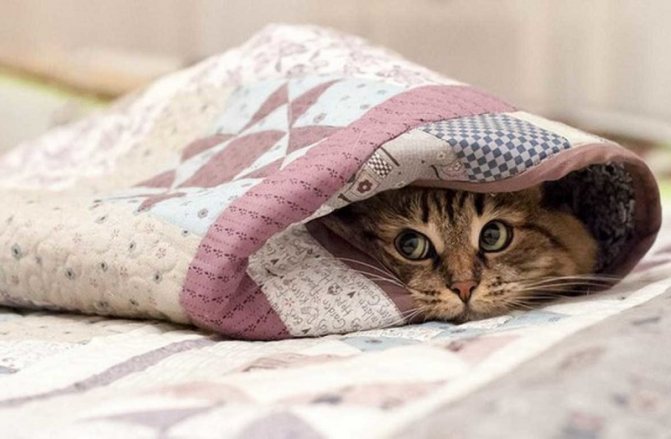

A cozy mink made from an electric blanket is also suitable for your beloved cat
Safe use of electric bedding:
- if the canvas is damp, dry it before turning it on;
- turn off during sleep;
- do not put under your head.
Is it worth making a stretch ceiling in the country
Vinyl film is not intended for use in freezing rooms. If you periodically heat the cottage in winter, it may be possible to avoid critical hypothermia. But at the same time, the unstable temperature in the room will affect the condition of the stretch ceiling. From strong cooling, the PVC film will narrow, and when the summer cottage warms up, on the contrary, it will stretch. As a result, the canvas, even if it does not tear, will sag in 2-3 seasons, partially losing its elasticity.
But this is not the biggest problem. In winter, when the ground freezes over and the neighborhoods are swept by snow, field mice find shelter in the country house. These seasonal "owners" in the cold gnaw everything that comes across.And if at least one of them crawls from the attic into the space between the ceiling, then without hesitation, it will turn the PVC cloth into a sieve. You should not rely on poisoning with an irregular visit to the dacha. One day, some circumstances will prevent you from getting there on time, and hungry mice will have time to deal with the ceiling in 1-2 days.
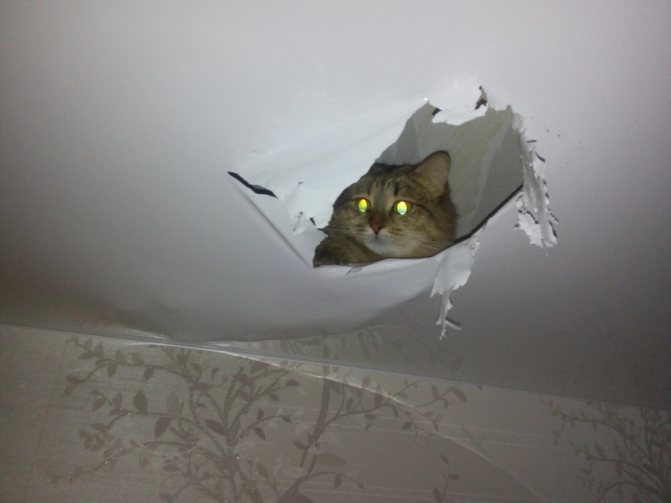

Perhaps the temperature problem is solved by a frost-resistant fabric cloth, but in a cold house in winter it will quickly become damp and almost inevitably covered with mold, which is almost impossible to wash later. So stretch ceilings in the country, which will not be heated in winter, are not at all obligatory, if not useless. Most owners will be content with more modest finishes. Consider the existing options:
- Plastic lining or panels... For a summer residence, this is the cheapest and most convenient way to finish. The panels can be washed, they are too tough for mice, they are not afraid of frost at all, and colors - as much as you want. Installation is so simple that any home craftsman can easily handle it.
- Wooden lining... In terms of costs, this option is not cheaper than tension structures, and installation will take a little more time. But if you do it yourself, the savings will be significant. Such a ceiling can be opened with varnish, preserving the natural appearance of wood, or painted in your favorite color. Lining is a very clean, practical and personable way of finishing.
- Plywood... An inexpensive and original option, especially if you have wooden furniture. At the same time, the external similarity of the surface texture with wood will create a single interior of the room. Various front finishes allow you to choose the right color. If necessary, you can paint the surface or treat it with a stain of the desired shade. The material is easy to handle and install, even without an assistant.
- Foam tiles... Also an inexpensive and quick way to finish a country ceiling. The choice of such tiles, both in size and pattern, is very wide. And if there is no suitable shade on sale, the foam is easily painted in the desired color. Ceiling tiles are glued without any preliminary preparation. It is better if the foam is laminated. Dirt does not stick on such a surface, and it is very easy to clean. Mice will not eat it, because with such a finish, no interceiling space is formed, the tiles are glued directly to the ceiling.
- Plain whitewash... Perhaps the easiest way to tidy up the ceilings. Even a person who does not have the skills of a painter can cope with the work. The bactericidal properties of lime protect the ceiling from mold, however, the whitewashing process cannot be called clean - splashes of the solution inevitably fall on the walls, furniture and floors and it is not easy to remove them later. Therefore, all surfaces are carefully covered with foil before the procedure. The disadvantages of this finishing method include the need to periodically whitewash the ceiling, since over time, cracks appear on the surface and lime begins to fall off in some areas.
So, we tried to briefly describe the main options for finishing ceilings in a country house or in a country house, the advantages and disadvantages of each method, but the choice, as always, is for the owner.
Heaters
It is difficult to answer this question unequivocally. Heaters that are powered by the electrical network are the simplest and most convenient, but at the same time the most expensive option. Solid fuel stoves (mainly firewood or other wood-based fuel) are the cheapest, but also the most time-consuming, way to heat a summer cottage in the cold season. Somewhere in between there is a gas-fired heating equipment.
According to experienced summer residents, it is best to use a combination of several methods to heat the house.For example, immediately after arrival you need to quickly heat the house. Here the stove will come to the rescue (both a potbelly stove and a Buleryan stove will do). When the stove stops producing heat (for example, at night), heaters come into play.
There are a lot of options for heating a country house in the cold season. How do you heat the room?
A source
The types of heating systems may depend on the available energy resource, design features, climatic conditions, and the budget of the owner of the dacha.
The main types of space heating are:
- gas heaters;
- electric heaters;
- furnace equipment;
- equipment operating on a liquid fuel resource;
- equipment operating on a solid fuel resource;
- universal heating systems.
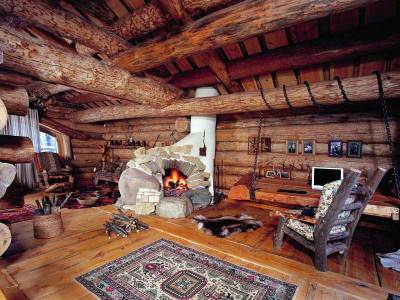

The choice of each type of heating requires budgeting of costs, taking into account the area of the building that needs heating. The choice of the method of supplying heat will depend on maintaining a positive temperature at the time of absence at the summer cottage.
Note!
In winter, the whole house may not need a heating system. Without heating, you can leave the attic, veranda, dressing room or other rooms that are rarely visited in the cold season.
Heating a country house in winter with electricity is considered one of the most economical types of heating. Electric heaters require less installation time than oven equipment. And the constant increase in electricity tariffs provokes the development of cheaper types of heating that save electricity.
In order to heat the house, use:
- oil heaters;
- fan heaters;
- UFO;
- electric convectors;
- infrared heaters;
- infrared panels;
- heat guns;
- warm skirting boards;
- electromatrases.
All of these types are easy to use and easy to assemble. The disadvantage is the significant power consumption.
Important!
If you heat the house with electricity, then the wiring in the house must withstand high loads.
Oil heaters have been widely used for the past twenty years. However, they are not as efficient at work as innovative models that can quickly heat a room. The oil system heats the room as a whole for a long time. It can heat the air only near itself, although there is a slight convection upward and to the sides. The oil structure can be floor-standing or wall-mounted if there are small children in the house.
We suggest that you familiarize yourself with Gutter heating: DIY heating system installation
Oil systems are inexpensive. The latest models are equipped with air humidifiers, which will not allow you to spend extra money. The element works without interruption for several days, does not make noise, which is convenient for use in an office or bedroom. You cannot burn yourself with the oil, since all the parts are hidden inside the device.
Fan heaters
Cottage heating can be done with a fan heater. Fan heaters rank first in terms of heating rate. In a short period of time, when the fan is on, the room heats up to 21 degrees. It is not possible to heat economically with such a fan. His energy consumption is high. During operation, the device must be supervised, since the fire safety class does not allow it to work unattended.
Advice!
During construction work in the country, it is recommended to use a fan heater that will quickly warm up the air.
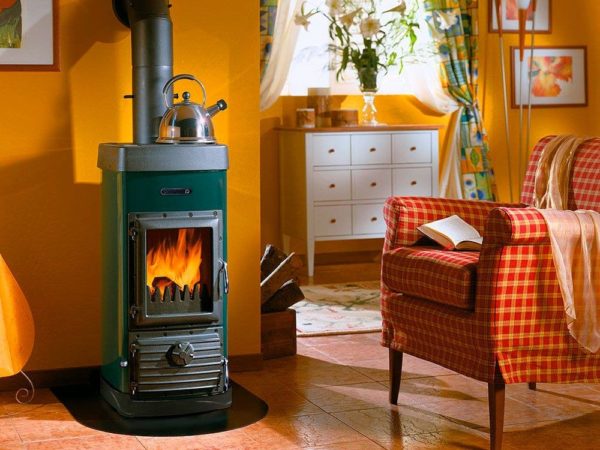

The cost of the product depends on the power of the fan and ranges from 600 to 8000 rubles.
UFO is considered to be a unique device that first heats people and objects, and then objects give their heat to people. UFO is able to heat even outdoors, in windy weather, therefore it is suitable for areas with poor thermal insulation, terraces, balconies. UFO is suitable if there is no autonomous heating or there is a need to take it outside.The appliance starts heating 30 seconds after turning it on. Some appliances can be turned on in the rain as they have a waterproof layer.
Convectors are widely used for summer cottages and other types of premises. The model can be wall-mounted, on casters. Mobile models are convenient to use to heat several rooms. The cost of the convector ranges from 3000 to 6000 thousand rubles. If you heat the room with convectors, then it is better to choose models that are equipped with a thermoregulation unit. Convectors are expensive but work economically.
Important!
It is forbidden to use electric convectors in the bathroom, as water droplets can enter the equipment, which lead to a short circuit.
Infrared panels
IR panels with infrared sensor are the ideal heating device for winter weather. The panels are not mobile, therefore they are mounted on walls and ceilings. It is necessary to control the panels using a temperature sensor. In a country house, panels heat rooms economically, but infrared rays have a bad effect on a person, they dry the air greatly. Installation of one panel will cost about 4000 rubles. Certain types of fasteners are adapted for wall and ceiling mounting.
Infrared heaters primarily heat objects, walls, floors. Infrared waves are perceived by the skin as the sun's rays. The room is heated locally in the places where the waves hit. The waves are propagated by the reflector made of aluminum. Each device is equipped with a thermostat, an overturn sensor.
Heat guns
The choice of a heat gun is carried out according to power, voltage, duration of operation, noise level. The cannon for giving must be equipped with an exhaust gas removal system. If there is no gas, you can heat the house with a portable or stationary gun. It is better to choose a device with thermoregulation, an overheating sensor, in a metal case. For a house, a summer residence, it is best to choose a rectangular cannon with a mesh heating element that does not dry the air.
Warm skirting board
Cold penetrates the house through walls and cracks. It is really better to heat the dacha over the entire area of the house. It is a good idea to install a warm skirting board. The system has a high heating rate, dries the walls, creates a heat shield. The skirting board uses water, eclectic heating. Saving electricity in comparison with other eclectic types is up to 30%.
Electromatras
The electric mattress is placed under the bed linen and plugged into an outlet. Such a mattress is one big heating pad. The mattress heats the entire bed, which is better than an electric blanket. For electromatras to serve for a long time, you need to choose a synthetic material. The mattress should also have a temperature regulator. For initial heating, it is better to choose the maximum. For a comfortable sleep, the temperature will need to be reduced.
The auto shut-off function creates additional safety during sleep, as well as when a person leaves the house. Thermal Zone Adjustment helps you set a comfortable temperature for each spouse or warm a specific part of the body.

